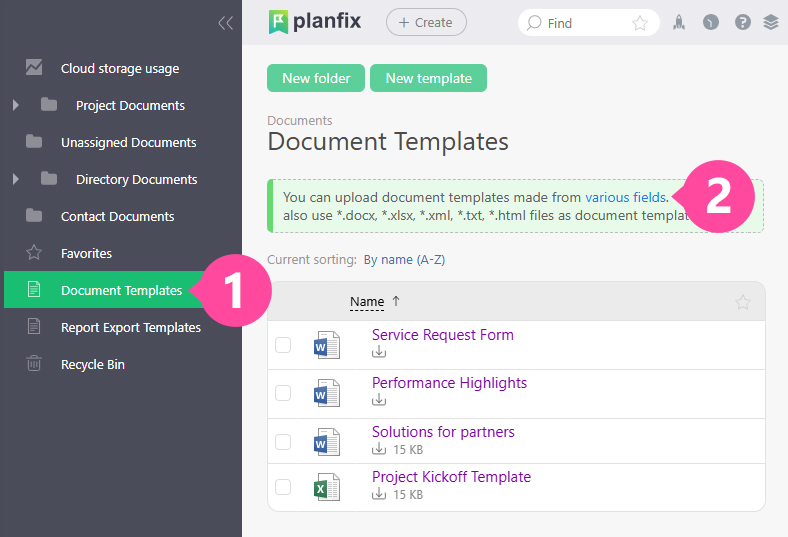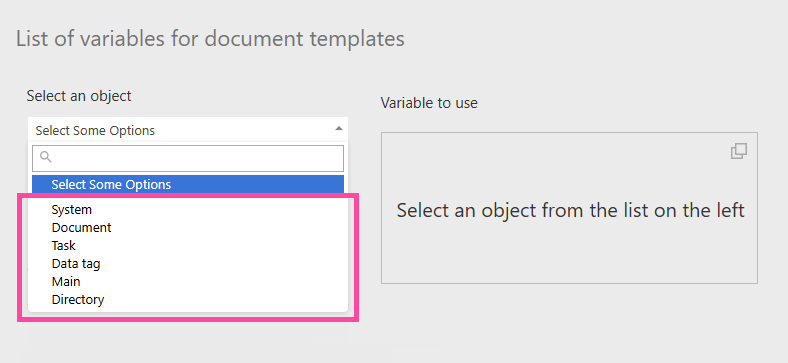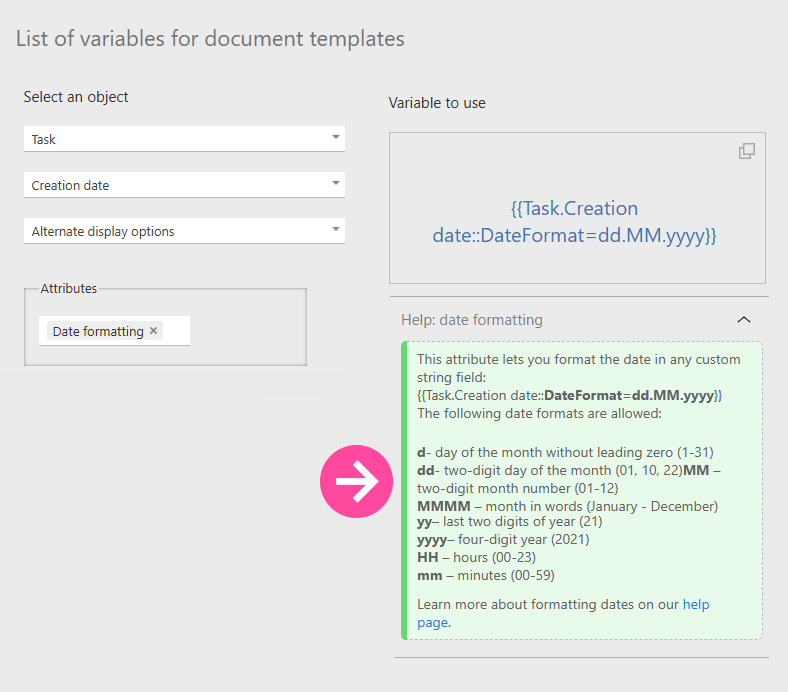Variables in document templates: Difference between revisions
From Planfix
| Line 37: | Line 37: | ||
*[[Choosing a format for data tag totals]] | *[[Choosing a format for data tag totals]] | ||
*[[Special list variables]] | *[[Special list variables]] | ||
*[[Formatting dates]] | |||
== Go To == | == Go To == | ||
Revision as of 09:34, 6 November 2025
Variables are can play a large role in document templates. When creating a document using a template, any variables used are replaced with the values stored in the object they are linked to. This makes document templates a convenient way to create documents and populate them with data from a specific contact, task, or data tag.
There are certain variables available for document templates, in addition to the variables used in task templates. A complete list of variables available can be found in the section Documents — Document templates:

- On the left-hand side of the window that opens when you click this link, you can see a list of available objects:

- After choosing an object, you'll be able to view the associated variable on the right-hand side of the window. These variables can be copied and then pasted in your document template:

- Some variables can be formatted. If that's the case, you'll see information about how to format the variable below the variable name:

- Formatting numbers are also possible. Under the name of the variable, information about formatting options can be found:
Important
There are two different types of variables that can be used in document templates:
- Regular variables.
- Variables that automatically add rows to the final document.
Variable encoding
Variables can be assigned different functions in Planfix.
Variables
- Text formatting variable in Microsoft Word document templates
- Choosing a format for data tag totals
- Special list variables
- Formatting dates
